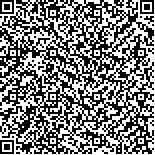陈龙,童嘉毅,沈祥波,卞叶萍,徐艳娟,马根山.超声微泡对骨髓间充质干细胞CXC类趋化因子受体4表达的影响[J].中华物理医学与康复杂志,2016,38(3):161-165
扫码阅读全文

|
| 超声微泡对骨髓间充质干细胞CXC类趋化因子受体4表达的影响 |
|
| |
| DOI: |
| 中文关键词: 超声微泡 骨髓间充质干细胞 CXCR4 钙离子 |
| 英文关键词: Ultrasound-exposed microbubbles Bone marrow mesenchymal stem cells CXCR4 Calcium ion |
| 基金项目:国家自然科学基金资助项目(81070083;81070265);江苏省自然科学基金资助项目(BK2012338) |
|
| 摘要点击次数: 4101 |
| 全文下载次数: 5778 |
| 中文摘要: |
| 目的探讨超声微泡(UM)对骨髓间充质干细胞(BMSCs)CXC类趋化因子受体4(CXCR4)表达的影响及可能机制。 方法取雄性SD大鼠骨髓,将培养至第3代生长良好的BMSCs分为对照组、超声(US)组、UM组、UM+过氧化氢酶组(UMC组)、UM+AMD3100组(UMA组)、UM+抗CXCR4抗体组(UMCX组)。对照组不予特殊处理,US组采用频率为1MHz、强度为1W/cm2的US辐照30s,UM组在US组基础上加入微泡,UMC组在UM组基础上加入过氧化氢酶,UMA组在UM组基础上加入AMD3100,UMCX组在UM组基础上加入CXCR4抗体。采用qPCR和Western blotting技术测定对照组、US组、UM组及UMC组CXCR4 mRNA的转录和蛋白表达水平;干预后即刻、5min、15min,在显微镜下观察经Fluo-4/AM标记的对照组、US组、UM组BMSCs胞内荧光强度;采用迁移实验观察6组BMSCs向基质衍生因子-1α(SDF-1α)的趋化能力。 结果US组BMSCs CXCR4 mRNA转录和蛋白表达水平与对照组比较,差异无统计学意义(P>0.05),但均低于UM组(P<0.05);UMC组BMSCs CXCR4 mRNA转录和蛋白表达水平均较UM组低(P<0.05)。US组细胞内的荧光强度与对照组比较,差异无统计学意义(P>0.05),但均低于UM组(P<0.05)。US组向SDF-1α的移行细胞数(22.4±2.2)与对照组(20.5±2.3)比较,差异无统计学意义(P>0.05),但均少于UM组(53.1±3.8)(P<0.05);UMC组(35.2±3.1)、UMA组(32.5±2.8)和UMCX组(30.7±2.9)向SDF-1α的移行细胞数均较UM组减少(P<0.05)。 结论UM可以促进BMSCs CXCR4的转录和表达,增加BMSCs向SDF-1α的移行数,该效应可能与钙离子的内流增加有关。 |
| 英文摘要: |
| Objective To explore the effects of ultrasound-exposed microbubbles (UM) on the expression of CXC chemokine receptor 4 (CXCR4) in bone marrow mesenchymal stem cells (BMSCs) and the mechanisms involved. MethodsMesenchymal stem cells were isolated from bone marrow taken from male Sprague-Dawley rats. They were divided into a control group, an ultrasound (US) group, an ultrasound-exposed microbubbles (UM) group, a UM plus catalase (UMC) group, a UM plus AMD3100 (UMA) group, and a UM plus anti-CXCR4 antibody (UMCX) group. The control group was not given any treatment. The US group was treated with 1 MHz ultrasound at 1 Watt per square centimetre for 30 seconds. The UM group was treated with ultrasound plus microbubbles. The UMC group was treated with catalase, microbubbles and ultrasound. The UMA group was treated with AMD3100, microbubbles and ultrasound. The UMCX group was treated with anti-CXCR4 antibody, microbubbles and ultrasound. Quantitative polymerase chain reaction (qPCR) and Western blotting were performed to determine the levels of CXCR4 mRNA transcription and the expression of BMSCs in the control, US, UM and UMC groups. Immediately, 5 minutes and 15 minutes after the intervention, fluorescence intensities were observed in the cells labeled with Fluo-4/AM of the control group, US group and UM group under a fluorescence microscope. Migration assays were conducted to determine the chemotactic ability of the BMSCs with respect to stromal-derived factor-1α (SDF-1α) in all six groups. ResultsNo significant differences were found in the levels of CXCR4 mRNA transcription and protein expression between the US and control groups(P>0.05), but the levels in those groups and the UMC group were lower than those observed in the UM group. Fluorescence intensity in the cells of the US group was not significantly different from that in the control group (P>0.05), but those levels were both significantly lower than that in the UM group (P<0.05). There was no significant difference in the number of cells migrating to the SDF-1α between the US (22.4±2.2) and control group (20.5±2.3). However, the number of cells migrating to SDF-1α in the UM group (53.1±3.8) was significantly larger than that in the US group, the control group, the UMC group (35.2±3.1), the UMA group (32.5±2.8) and the UMCX group (30.7±2.9) (P<0.05). ConclusionUM can increase mRNA transcription and the expression of CXCR4 protein in BMSCs, and promote BMSCs migration to SDF-1α. This may in part be mediated by an increase in calcium influx. |
|
查看全文
查看/发表评论 下载PDF阅读器 |
| 关闭 |
|
|
|